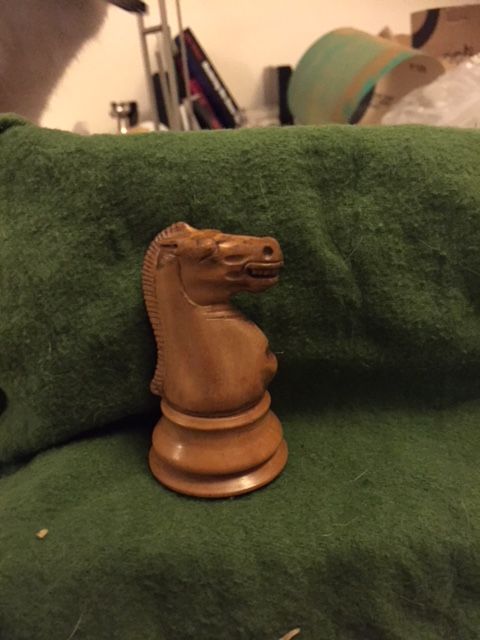Yes, some of us on this thread have tried to get the Indian (and in some cases Chinese) manufacturers to make a very good copy of an early Jaques with varying degrees of success or lack thereof depending on who is judging the result.
Non have entirely achieved the very high standards the old turners met. I am not sure why.
I like the big form tools the Indians are using now. This method, (very broad form tools) is one I used when I was running a small components factory way back in the mists of time but as my work, more recently, (as in the last 30 years or so) was more of the one-off type I didn't think it would be cost effective to use the time involved in making form tools (although I do use some on odd occasions).
I did over the years make probably 100 or so copies of various sets from the so called Pepys style sets to very good sets in the German Edel style.
Bertram Jones and his son Bill also made copies of various sets, including Pepys type ( which Bill called 'onion sets') and of course lots of Staunton sets in ivory (we are talking of a time from about 1940 to about 1980) Bertram was making as many as 3 Staunton ivory sets in a week for 8 GBP total, it took him 1 day to carve all 12 knights heads. (although I must say, he was a terrible carver and Bill wasn't much better as the picture of an ivory flame finial in Bill's first book. Notes From the Turning Shop shows. However his client was happy and that is all that mattered I guess).
Bertram's Stauntons also sold through Macys here in the States and occasionally do show up on ebay and in auctions. They do not look much like Jaques sets.
I guess if someone out there had perfected a way to make exact copies of Jaques sets, down to screw in weights, 4 pronged insertion marks and old wool based baize. Getting the patina right on the boxwood side, (particularly difficult, as even speeding up the aging process by dipping the pieces in Nitric acid (very dangerous, don't try it) doesn't leave them quite right without a lot of post dip processing. I have discussed this aging process with various other restorers in different areas (eg flute makers and the like) but everyone agrees that as soon as you compare the 'new' to the genuine the difference is visible.
So, to sum up, if it is possible, we would never know, but I doubt it.
When I was restoring in Portobello Road I worked for Garrick Coleman (and others) for many years, he also took in restoration work for a well known American dealer, which also had to pass through my hands as there was no one else.









This is clearly a Jaques set and genuine. I am probably the only person in the world who could copy an old Jaques to that very high standard and I didn't do it.
So Occam's razor must be wrong in this case.
I am trying to find out the history/provenance of the set. I can guess that Jaques made this as a special order for one of the better retailers in London who wanted it for a specific customer.
Why Oak? My best guess ahead of the facts, is that the wood came fron a sailing ship with which the customer was associated or one of his family, father grandfather etc.
The wood pieces do have the correct weights, screw in with insertion marks and they are all of an equal quality to Jaques production at that time. Imagine trying to get one of the, admittedly, fairly talented Indian makers to reproduce a set like this down to the last detail. even to old baize on the wood side. It ain't going to happen.
So in this case, and with the greatest respect, Jon C is wrong.
yup, i also think he is wrong, its definitely a Jaques and in my opinion, not from two sets. and youre right Alan, its almost impossible to replicate. I like the notion it may have been and probaly is a one off set!